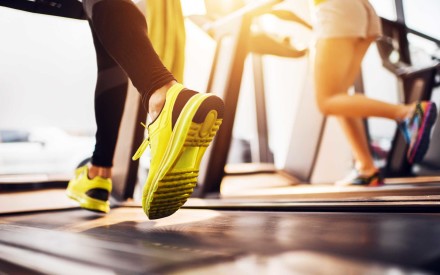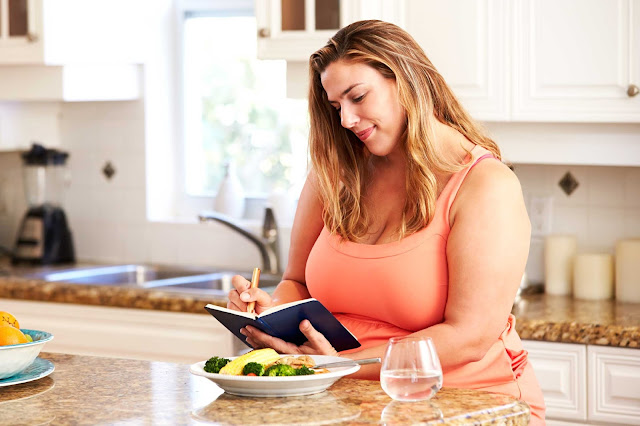Can’t Take 10,000 Steps a Day? Do This Instead
For days when it's not feasible to cram in the recommended 10,000 daily steps, this shorter routine has got you covered.
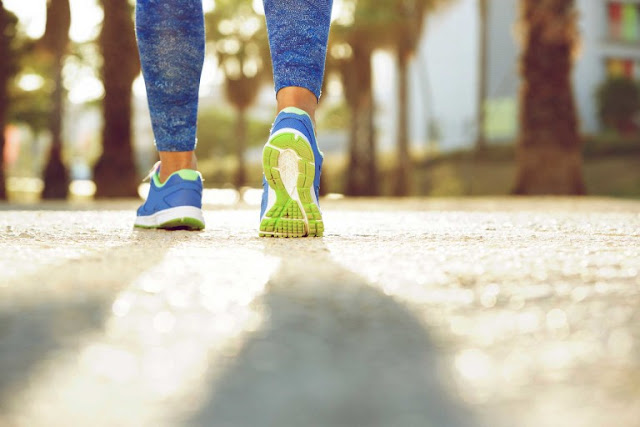
Taking 10,000 steps per day is a great way to get your daily dose of physical activity, but only 15 percent of American men and women regularly hit that healthy target, according to a brand-new study from Oregon State University. Lack of time is the most commonly cited obstacle, but fortunately, there’s an alternative that may be easier to fit into a tight schedule.
In the year-long study, published in the journal Medicine & Science in Sports & Exercise, Oregon State researchers found that although people who took more steps each day were typically healthier than those who took fewer steps, speed made a difference. Those who took 5,000 to 7,000 steps at a faster pace scored similar health benefits, including things like smaller waist circumference, lower blood pressure, and reduced BMI and cholesterol levels.
Based on these findings, study co-author John Schuna, Jr., PhD, assistant professor of kinesiology at OSU’s College of Public Health and Human Sciences, recommends aiming to take 3,000 steps each day at a brisk pace, which may be 100 or more steps per minute for two and a half hours, or 150 minutes, each week.
This healthy target fits with the guidelines of both the CDC and the Department of Health and Human Services, which advise that healthy adults get at least 150 minutes of moderate intensity activity or 75 minutes of vigorous aerobic activity each week. Examples of moderate intensity workouts include brisk walking, yoga, pushing a lawn mower, gardening, or riding a bike under 10 mph; examples of vigorous intensity activity include jumping rope, running, jogging, biking over 10 mph, and hiking uphill.
“Running or jogging two and a half miles is equivalent to walking 10,000 steps,” says Chauncey Graham, CSCS, an ACE Fitness Professional at Gold’s Gym in Washington, D.C. Higher-intensity workouts also come with added benefits, including improvements to your cardiorespiratory system. “A heightened level of exercise will prevent and lower your risk of many common diseases as well as obesity,” Graham says.
Most experts agree that a mix of high intensity and moderate intensity workouts yield the best results, however, if you’re dedicated to reaching your 10,000 steps each day via walking, try to take 3,000 of those steps at a faster pace. But some exercise is certainly better than none, so if you can spare only 60 seconds to sweat, try these exercises that will transform your body.
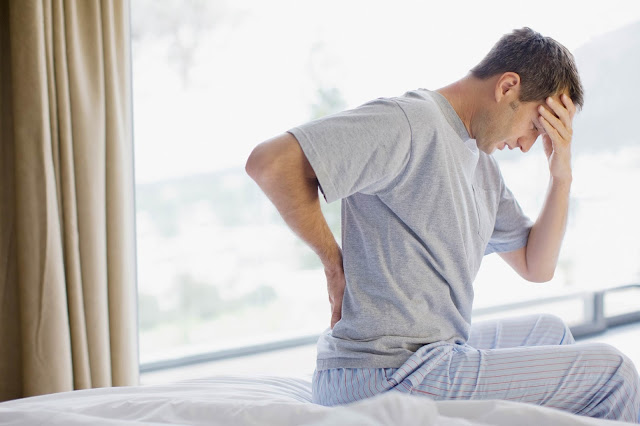 Conditions
Diet & Weight Loss
Diet and Weight Loss
Everyday Wellness
Fitness
Health
Health Care
Healthy Eating
Conditions
Diet & Weight Loss
Diet and Weight Loss
Everyday Wellness
Fitness
Health
Health Care
Healthy Eating
7 Clear Signs You Need to Move More
Yes, exercise can help you lose weight, but you’ll be surprised at how many other ways it can radically improve your health and well-being.
You're suddenly experiencing pain
We’ve all had one of those mornings—you wake up and your lower back, knee, or shoulder is suddenly aching. But while you might be tempted to wait it out, certified personal trainers Jim Karas and Michelle Blakely suggest getting your body in motion. Just moving your muscles, loosening your joints, and getting blood pumping to that area of your body can be enough to lessen the pain, Karas says. Even clients who have faced longer-term pain, like that which comes with rheumatoid arthritis, have improved their daily movement and ability to do chores by getting regular exercise. After your workout, chow down on one of these foods that fight pain naturally.
You're constantly fatigued
If you’re tired all the time, even with adequate food and sleep, maybe all you need is to move a bit more. It may seem a bit counterintuitive, but a study from the University of Georgia showed that just 20 minutes of moderate-intensity aerobic exercise three times a week increased energy levels by 20 percent. Researchers said the findings showed how exercise directly acts on the central nervous system to decrease fatigue, in some cases as much as 65 percent, according to the New York Times. “I like to tell my clients that an object in motion stays in motion,” says Chicago-based personal trainer Traci Mitchell. “It’s kind of like getting that big boulder of motivation moving, and once it gets moving, your energy increases.” Here are more tricks to beat fatigue naturally.
You're stressed
“Stress levels have never been higher,” Karas says, and statistically, he is right. Researchers at Carnegie Mellon University showed that stress increased 18 percent for women and 24 percent for men from 1983 to 2009. We’re more worried about finances, constantly bombarded by media and information, and too busy to decompress—and that stress could be making us sick. But just walking, running, or strengthening your body for 20 to 30 minutes three to four times a week is enough to significantly decrease your anxiety, and research shows that adding in music makes that exercise even more effective in fighting stress. “If you’re dealing with a difficult decision, probably one of the best things you can do, whether it’s personal or business, is to get out and put your ear buds on,” Karas says.
Your hormones could use some TLC
Exercise is an excellent way to help regulate your hormones, and you’d be surprised at how much that can impact how you think, look, and feel. For example, boosting your testosterone levels, which can be done through exercise, helps increase your metabolism, maintains youthful-looking skin, and keeps your brain functioning properly, according to Karas.
Your digestion is out of whack
A 30-minute run or brisk walk will do more than just increase your appetite for dinner; it will help you digest your dinner, too. Aerobic exercise quickens your breathing and heart rate, which in turn improves the contraction of your intestinal muscles. As a result, your digested food passes more quickly through your intestines and out of your body, decreasing constipation. Moving in whatever method (walking, running, swimming, dancing, and even stretching or yoga) will help with digestion. Enhance the healthy belly benefits your workout by adding foods that boost good gut bacteria to your diet.
Your time-management tricks are failing you
Personal trainer April Sutton says a lot of her clients approach her for assistance when they feel like they’ve lost control over how they structure their time due to overwhelming work and family commitments. “They can’t really think for themselves outside of their jobs because they’re so burnt out,” says Sutton. Trainer Michael Moody has clients prioritize exercise, and think about how other habits (how they eat, sleep, and how much they sit at work) can impact how they feel when they exercise. Becoming “human scientists of their body” helps people better understand how their lifestyles can impact their health, Moody says. From there, it’s a matter of correcting bad habits, and continuing to put aside time to exercise regularly. Besides exercise, successful people do these things after work.
You're not sleeping well
If you’re having trouble nodding off or staying asleep at night, you may need to move a bit more during the day. In a study published in the journal Sleep Medicine, researchers at Northwestern University found that insomniac middle-aged and older participants who exercised and were taught to sleep in a cool, dark room and go to bed at the same time each night got 1.25 more hours of sleep nightly than those who did not participate in physical activity. Whether you have chronic insomnia or you just haven’t been sleeping well lately, getting some aerobic activity in during the day will probably help you catch more Z’s at night. Here are some signs you're not sleeping deeply enough.
Eucalyptus Oil: How It Heals
You can use eucalyptus oil to treat everything from bad breath and body odor to bronchitis and colds and flu.
Australian Aborigines traditionally used infusions of eucalyptus leaves to relieve respiratory congestion, coughs, and fevers, and as topical applications for sore muscles. Essential oil was distilled from eucalyptus trees not long after the first European settlers arrived in Australia. Commercial production commenced in the mid-1800s, and the oil soon came to be highly prized around the world for its antiseptic and antibacterial properties.
How Eucalyptus Oil Works
Eucalyptus oil contains several active constituents. The most important is 1,8-cineole (sometimes referred to as eucalyptol), which has an antimicrobial effect against a wide range of disease-causing bacteria, viruses, and fungi.
How to Use Eucalyptus Oil
For respiratory conditions such as asthma, sinusitis, bronchitis, colds and flu, eucalyptus oil is often used as an inhalation—commonly via a nebulizer or vaporizer in which the oil is diluted in steaming water. It is sometimes also used in a cream or ointment that is rubbed onto the chest, delivering the therapeutic actions through a combination of inhalation and the penetration of the oil through the skin. It is also sometimes included in throat lozenges or cough mixtures in minute quantities.
Topical applications of eucalyptus essential oil (usually in dilute concentrations) can also be used to treat infections of various kinds. For example, the essential oil and/or 1,8-cineole derived from it are often included in mouthwash products to help kill the bacteria that cause plaque, gingivitis, and bad breath. Eucalyptus oil can also be added to laundry to kill dust mites in sheets, disinfect clothes and leave the washing smelling fresh.
Research also suggests that an ointment containing eucalyptus oil and other antimicrobial substances may be beneficial in the treatment of fungal toenail infections.
Safety First
Eucalyptus oil should not be taken internally. The topical use of the oil is not suitable for babies, children, pregnant or breastfeeding women, or people allergic to Eucalyptus spp. Caution is advised with eucalyptus inhalations as they can irritate the eyes, mucous membranes and skin.
Where to Find Eucalyptus Oil
Eucalyptus essential oil is available in health food stores and pharmacies or from a qualified aromatherapist.
Benefits of Ginger: How It Heals Indigestion and More
Think beyond ginger ale.
This tasty spice has been used as both a condiment and a medicine for centuries. It was a staple at Roman banquets, to counter symptoms of overindulgence, and was much favored in ancient China and in India’s Ayurvedic medicine as a remedy for indigestion, stomachaches, respiratory congestion, constipation, and diarrhea. It was also used as a tonic for women’s gynecological conditions, being thought to stimulate the flow of qi, or energy, to the reproductive organs.
How Ginger Works:
Ginger contains antioxidant substances called gingerols, which are thought to be responsible for its ability to alleviate nausea and indigestion. Unlike many conventional antinausea medications, ginger has the important benefit of not causing undesirable side effects such as a dry mouth or sleepiness. Research has shown that ginger can address nausea caused by a variety of causes, including food poisoning, motion sickness, pregnancy, postsurgical procedures, or the side effects of conventional drug treatment, notably chemotherapy. Similarly, ginger has been shown to alleviate symptoms of indigestion, including flatulence, bloating, and griping pain.The gingerols in ginger are also thought to account for its ability to alleviate some of the symptoms of rheumatoid arthritis, osteoarthritis, and muscular discomfort such as pain, inflammation, and swelling, possibly by inhibiting the production of inflammatory substances called prostaglandins and leukotrienes. This may also account for its ability to naturally relieve menstrual cramping.
Ginger is often given as a tonic to fight colds and chills and improve circulation, with Taiwanese research confirming its benefits for circulatory health, as it does have mild blood-thinning properties. Ginger also has antimicrobial, carminative, and diaphoretic (increases sweating) properties and may help to boost the immune system. These qualities make it of some benefit in treating coughs, colds, laryngitis, or a sore throat where it is often combined with honey and lemon.
How to Use Ginger:
Ginger can be eaten fresh or dried, or in pickled, jellied (candied), crystallized or syrup form, as a tea, or taken as a supplement, either as a tablet or capsule. When using supplements, follow label instructions or take as professionally prescribed.Safety First:
Consult your doctor if using high doses of ginger while taking anticoagulant (blood-thinning) medications.Where to Find Ginger:
Ginger supplements and tinctures are available in health food stores. Fresh ginger is sold in supermarkets.Morning Habits of Naturally Thin People
Rise and shine! Incorporating these simple steps into your morning routine may make it easier to lose weight.
They open the shades

A flood of sunshine isn’t just an instant morning pick-me-up: A Northwestern University found that people exposed to moderately bright light in the morning have significantly lower BMIs than people who get the majority of their light exposure later in the day. Independent of physical activity, sleep timing, caloric intake, age, or season, morning light exposure accounted for about 20 percent of an individual’s BMI. Lack of sunlight can de-synchronize your internal body clock, altering metabolism and leading to weight gain. Just 20 to 30 minutes of morning light is enough to affect BMI.
They butter the bottom of toast

It sounds strange, but if you’re looking to lower calorie intake, look to the bottom side of your breakfast foods. “Butter the bottom of toast, and salt the bottom of potato rounds,” Devin Alexander, chef and host of FitTV’s Healthy Decadence, told Health. “It really helps with weight loss. When you eat foods this way, the flavor hits your tongue right away, and you actually taste more of it. Ultimately that means you can cut out at least half the belly-bloating salt or butter.”
They pick the right glassware

When you pour your OJ or apple juice, use a tall, thin glass to save on sugar and calories. A Cornell University study found that when participants poured into a short, squat glass, they drank 25 to 30 percent more. Researchers say individuals tend to focus on the height of the liquid they pour (rather than the width) and therefore estimate tall glasses hold more liquid than wide ones of the same volume.
They include protein in breakfast

Most Americans only get about 10 to 15 grams of protein for breakfast, but doubling that may help you lose weight. Research presented at an Obesity Society meeting found that women who ate a breakfast with 30 grams of protein from sausage and eggs consumed about 100 fewer calories at lunch compared to those who ate a low-protein pancake breakfast. “Protein is key for satiety,” Heather Leidy, assistant professor in the Department of Nutrition and Exercise Physiology at the University of Missouri, told Eating Well. “It activates the body’s signals that curb appetite, reduce food cravings, and prevent overeating.”
They take a few minutes to meditate

No need to chant in lotus position. Just focusing on your breath for a few minutes in the morning could help increase your mindfulness, leading to a day of smart food choices. Brown University researchers distributed a 15-question survey to nearly 400 people and measured their body composition. The survey included questions such as “I find it difficult to stay focused on what’s happening in the present.” People who showed low levels of mindfulness on the Mindful Attention Awareness Scale (MAAS) were 34 percent likelier to be obese and held a pound more of fat in their bellies. Researchers say individuals who are more aware of their thoughts may be likelier to notice the negative emotions caused by eating too much.
 Conditions
Diet & Weight Loss
Diet and Weight Loss
Everyday Wellness
Fitness
Health
Health Care
Healthy Eating
Conditions
Diet & Weight Loss
Diet and Weight Loss
Everyday Wellness
Fitness
Health
Health Care
Healthy Eating
6 Signs Your Diet Is Making You Tired
You'll be shocked at which common eating habits and foods make you sleepy. Here's how to switch to high-energy foods.
You rely on coffee more and more
Coffee provides you with a morning wake-up call, and maybe an early afternoon pick-me-up. However, if you find yourself reaching for the coffee cup throughout the day, you might be compensating too much. Skipping the afternoon java could also boost your energy, along with these other fatigue-fighting tricks. Before drinking that fourth cup, reevaluate your diet and try to add more energy-rich foods.
You don't snack
When starting a weight-loss plan, you may want to cut out as many calories as possible; yet Mayo Clinic warns against this tactic. Going more than four hours between meals can leave blood sugar in the basement and you feeling lifeless. A healthy and well-planned diet allows for snacking. Try noshing on fruits and veggies with hearty fiber to fill you up. Here are some healthier snack ideas.
You’ve sworn off all sugar
Yes, sugar is the health villain du jour right now. Yes, you should be conscious of hidden sugar in packaged and frozen foods. And yes, if you are eating too much sugar, take steps to cut back. But be conscious that your body also needs some sugar to function. Avoiding an apple as a snack because it has natural sugar, for example, is a sign of taking diet restrictions too far. Foods like fruit or milk naturally have some sugar—along with a wealth of energizing nutrients.
You’re not eating carbs
Don't fear carbs. Your body needs grains to function well and not feel sleepy 24/7. The key to a successful diet is a well-rounded source of fiber-rich and complex carbs, according to WebMD. Check out these healthy carbs that nutritionists want you to eat.
You skip breakfast
You might be in the habit of grabbing a cup of coffee and running out the door, but if you find yourself feeling sleepy mid-morning or late-afternoon, it's a good idea to reevaluate your morning eating habits. A protein-packed breakfast helps balance your blood sugar and provides a steady stream of energy throughout the morning. Check out these suggestions for healthy breakfast ideas.
You’re exercising too much
Too much exercise and too few calories can put your body in starvation mode, says livestrong.com. Rather than losing more weight, your body will go into crisis mode. This causes you to store more calories as fat and leaves you feeling like a zombie. Rather than becoming obsessive about burning calories, try to live an active lifestyle and walk as often as you can during your regular day. Here are 16 ways you can lose weight by walking.
 Conditions
diabetes
Diet & Weight Loss
Diet and Weight Loss
Everyday Wellness
Fitness
Health
Health Care
Healthy Eating
Conditions
diabetes
Diet & Weight Loss
Diet and Weight Loss
Everyday Wellness
Fitness
Health
Health Care
Healthy Eating
Diabetes Fatigue — Get Your Energy Back

Causes of fatigue
How does diabetes make you tired? • High blood sugar makes blood sticky, so it can’t get through the capillaries as easily to bring oxygen to cells. You know how you get sleepy after a big meal? High blood sugar can mean having that feeling all the time. • Insulin resistance keeps glucose out of body cells, so they don’t have fuel. • High blood sugar also causes inflammation. Remember how exhausted you get with the flu? That is, in part, inflammation. The same thing happens with poorly controlled diabetes. • Hypoglycemia, or low blood sugar, can cause fatigue.

How to get your energy back
• Sleep better. It should be obvious, but our society denies it. We need to sleep. Before electricity, 9–10 hours a night was normal. Now we’re lucky if we get 7, and many people with diabetes get far less. See a couple of articles on getting better sleep here and here. Ask your doctor to be checked for sleep apnea.
 Conditions
diabetes
Diet & Weight Loss
Diet and Weight Loss
Everyday Wellness
Fitness
Health
Health Care
Healthy Eating
Conditions
diabetes
Diet & Weight Loss
Diet and Weight Loss
Everyday Wellness
Fitness
Health
Health Care
Healthy Eating
Natural Ways To Get Rid Of Pimples Overnight Fast
 1.) Apply a Cinnamon and Honey Mask to Get Rid Of Pimples
Cinnamon and honey have natural antimicrobial properties. Together, they make a killer combination to destroy pimples. You need just one teaspoon of cinnamon and two tablespoons of natural honey. Preferably, you should use Manuka honey. This unique brand of honey, from the Manuka forest in New Zealand, has amazing healing and pain relieving properties. Mix the cinnamon into a paste then blend in the honey. Rinse your face and pat it dry. Then apply the paste to the blemishes and leave it there overnight.
2.) Whip Egg Whites to Get Rid Of Pimples
Egg whites provide a cheap, easy and quick way to remove pimples. They also eliminate scars. Egg whites contain vitamins and amino acids that help to kill pimples and re-build your skin’s cells. Separate 3 egg whites from their yolks. Whisk them properly and allow them to settle for 3 minutes. Apply the whisked egg whites to the pimples using your fingers. Wait for it to dry then repeat this 4 times. Then leave the final mask for 20 minutes, rinse off and apply a suitable skin moisturizer.
1.) Apply a Cinnamon and Honey Mask to Get Rid Of Pimples
Cinnamon and honey have natural antimicrobial properties. Together, they make a killer combination to destroy pimples. You need just one teaspoon of cinnamon and two tablespoons of natural honey. Preferably, you should use Manuka honey. This unique brand of honey, from the Manuka forest in New Zealand, has amazing healing and pain relieving properties. Mix the cinnamon into a paste then blend in the honey. Rinse your face and pat it dry. Then apply the paste to the blemishes and leave it there overnight.
2.) Whip Egg Whites to Get Rid Of Pimples
Egg whites provide a cheap, easy and quick way to remove pimples. They also eliminate scars. Egg whites contain vitamins and amino acids that help to kill pimples and re-build your skin’s cells. Separate 3 egg whites from their yolks. Whisk them properly and allow them to settle for 3 minutes. Apply the whisked egg whites to the pimples using your fingers. Wait for it to dry then repeat this 4 times. Then leave the final mask for 20 minutes, rinse off and apply a suitable skin moisturizer.
 3.) Apply Orange Peels and Juice to Get Rid Of Pimples
The ascorbic acid and vitamin C in oranges make them a potent cure for pimples. And they are very easy to use. Simply rub the peels on the pimples and dab them with the orange juice. Before you do any of these, make sure you wash your hands thoroughly to prevent the transfer of bacteria to your skin. You may also wash your face with warm water to open up the pores. Use different pieces of orange peels for each spot you want to treat. You may apply the orange juice with cotton buds. Leave the juice on your face for at least 1 hour before you wash it off.
4.) Use Neem to Get Rid Of Pimples
Neem oil and neem powder are powerful natural treatments for pimples. They have powerful antibacterial properties. You can get them to buy online or at the local organic or natural food store in your area. Rinse your face with warm water to open up the pores of your skin. Use cotton buds to daub the oil and apply it directly to the pimples. You can also mix the powder with a small quantity of water to form a paste and apply it to the spots. Leave the paste on throughout the night so it can penetrate the skin destroy all the bacteria in the pimples.
3.) Apply Orange Peels and Juice to Get Rid Of Pimples
The ascorbic acid and vitamin C in oranges make them a potent cure for pimples. And they are very easy to use. Simply rub the peels on the pimples and dab them with the orange juice. Before you do any of these, make sure you wash your hands thoroughly to prevent the transfer of bacteria to your skin. You may also wash your face with warm water to open up the pores. Use different pieces of orange peels for each spot you want to treat. You may apply the orange juice with cotton buds. Leave the juice on your face for at least 1 hour before you wash it off.
4.) Use Neem to Get Rid Of Pimples
Neem oil and neem powder are powerful natural treatments for pimples. They have powerful antibacterial properties. You can get them to buy online or at the local organic or natural food store in your area. Rinse your face with warm water to open up the pores of your skin. Use cotton buds to daub the oil and apply it directly to the pimples. You can also mix the powder with a small quantity of water to form a paste and apply it to the spots. Leave the paste on throughout the night so it can penetrate the skin destroy all the bacteria in the pimples.
 5.) Blend Strawberries and Honey to Get Rid Of Pimples
Strawberries contain a very important ingredient called salicyclic acid. This is the primary active ingredient is several commercial formulations used to treat pimples. Salicyclic acid stimulates the epidermis (the upper layer of the skin) to shed its cells faster. So the clogged pores open up and the bacteria get neutralized. This substance also encourages the development of fresh skin cells and the subsequent closing of the pores to prevent fresh infection.
Rinse your face with warm water. Then wash at least 3 strawberries thoroughly to remove all the dirt on them. Mash them carefully without allowing them to become watery. Add two teaspoons of honey and blend them. Add the mixture to your skin and allow it to stay for 30 minutes before you rinse it off.
5.) Blend Strawberries and Honey to Get Rid Of Pimples
Strawberries contain a very important ingredient called salicyclic acid. This is the primary active ingredient is several commercial formulations used to treat pimples. Salicyclic acid stimulates the epidermis (the upper layer of the skin) to shed its cells faster. So the clogged pores open up and the bacteria get neutralized. This substance also encourages the development of fresh skin cells and the subsequent closing of the pores to prevent fresh infection.
Rinse your face with warm water. Then wash at least 3 strawberries thoroughly to remove all the dirt on them. Mash them carefully without allowing them to become watery. Add two teaspoons of honey and blend them. Add the mixture to your skin and allow it to stay for 30 minutes before you rinse it off.
 Conditions
diabetes
Diet & Weight Loss
Diet and Weight Loss
Everyday Wellness
Fitness
Health
Health Care
Healthy Eating
Conditions
diabetes
Diet & Weight Loss
Diet and Weight Loss
Everyday Wellness
Fitness
Health
Health Care
Healthy Eating
The Most Common Weight-Loss Blunders

“So many people embarking on a weight loss journey focus on what they can’t have—[such as] no sugar, no alcohol, no dessert, no bread, no cheese. I like to tell my readers to focus on what they can have and tally up all the filling and nutritious superfoods out there.”
“[Don’t] eliminating foods you love. Too many people who are trying to lose weight develop the all-or-nothing attitude. This way of thinking can be detrimental in the long run. Instead of depriving oneself of foods they love, they should learn how to incorporate them into their diet in a healthier way. For example, love pasta? Instead of adding a creamy high fat sauce, add lots of veggies, grilled shrimp, and toss in olive oil and garlic. Can’t live without bread? Well, you shouldn’t have to. Make a healthy sandwich for lunch on 100 percent whole grain bread with grilled chicken, avocado, lettuce, and tomato.”
“Green juices and smoothies are very popular right now, and a lot of people will use these as meal replacements. Unfortunately, oftentimes these beverages aren’t made up of the right mix of nutrients. Green juices lack fiber and protein, which are key nutrients in keeping you full and helping you meet your nutrient recommendations, and smoothies are typically loaded in sugar from juice, sweeteners, or too much fruit, and can be really high in calories from oversized portions of healthy fat sources like nuts and seeds.”

“The biggest pitfall I constantly see my clients falling into is the calorie counting trap. Many women come to me struggling to follow a 1,200 calorie per day diet and ask me what would help them to feel more full during the day. My answer is always to eat more! We live in a culture that is so obsessed with calorie counting that oftentimes we are depriving our body of the very nutrients that will actually help us not only to live healthier, but lose more weight. In my practice I try and help my clients transition from counting calories to counting nutrients because at the end of the day, what you eat is just as important as how much you eat.”

 Conditions
diabetes
Diet & Weight Loss
Diet and Weight Loss
Everyday Wellness
Fitness
Health
Health Care
Healthy Eating
Conditions
diabetes
Diet & Weight Loss
Diet and Weight Loss
Everyday Wellness
Fitness
Health
Health Care
Healthy Eating
Tips to Manage Post-Run Hunger

Running is an easy way to be active, as all it really takes is a pair of shoes, and you’re ready to go. For this reason, many people desiring to lose weight often try running as a way to accelerate the process.
As a sports dietitian, I often work with beginner runners looking to improve their fitness and hopefully lose weight. I often hear a story from this crowd that makes many of them question whether they should be running at all. As they run more miles or more frequently, their overall appetite increases. This can create a sense of panic as new runners try to manage their hunger and keep on track with their weight-loss goals. Perhaps you’ve experienced this interesting phenomenon and also wondered what the heck was going on.
Well, there’s actually a lot going on in our bodies, and knowing how to handle our hunger requires us to understand it first.
Appetite and hunger are regulated by hormones. One main hormone, ghrelin, stimulates appetite and food intake. Others like PYY initiate satiety and tell your brain that you should stop eating. These hormones fluctuate throughout the day to stimulate and halt hunger based on levels of glucose in the bloodstream, the amount of food (or lack thereof) in the stomach and altered physiological states like stress. Exercise also impacts appetite hormones. It is well-known that ghrelin is suppressed during and immediately following exercise. This explains why you rarely feel hungry while running or right after.
Why Running Makes You HungryThis article is about an increase in appetite, so clearly the story doesn’t end there. A lot of research has focused on just this issue and explored what causes appetite to change in relation to exercise. Here are two of the key reasons why your appetite may be more intense after a run:
 Exercise Adaptation
Exercise Adaptation
When you first begin a new exercise routine, it’s going to be challenging for your body and require more effort to perform. Running is no different, and, therefore, beginner runners burn more calories as the body adapts and becomes more fit. Research has found that appetite and food intake may increase after moderate to intense exercise to make up for this large expenditure of energy. Running in and of itself may be causing the increase in your appetite.
Cutting CaloriesReducing calorie intake has also been connected with a compensatory increase in appetite related to changes in hormones. It’s almost like your body knows you are eating less and tries to tell you to eat more. One study found that a higher appetite was reported 4–8 hours after exercising in a fasted state than when exercising after a meal. Since many people run first thing in the morning on an empty stomach or cut extra calories to try to lose more weight, they may be experiencing an increased appetite because their body desires — and truly may need — more energy.
 Tips to Manage Post-Run Hunger
Tips to Manage Post-Run Hunger
While these findings could be discouraging, don’t worry! With a few tweaks to your eating plan, you can help ensure that post-running hunger does not hinder your weight-loss goals. Troubleshoot your hunger with these tips:
Don’t restrict calories too much when starting a running program. Not only is it potentially not a sustainable plan, but it could be causing an increase in your appetite that is difficult to manage. Make sure you are:
Getting adequate calories throughout the day.Running with a little fuel in your system by eating a snack 15 minutes–2 hours prior or a meal 2–3 hours prior. Refueling after your longer runs (about 45 minutes or more) if it’s going to be more than 2 hours before your next meal or snack. (Try my favorite Chocolate Tart Cherry Recovery Smoothie.)
Eat every 3–4 hours during the day to keep energy levels up. When you go longer than 4 hours without eating, glucose levels in the blood can drop significantly and trigger your appetite hormones. Your brain will signal you to crave foods high in energy and fat to fix this problem, which makes it really difficult to say no to sweets and treats.
Incorporate high-fiber foods into your meals and snacks. Fiber can slow the emptying of food from the stomach, which means you will feel fuller (or more satisfied) longer. Choose a serving of raw veggies, fruit, whole grains, legumes or nuts at each meal or snack to provide a boost of fiber.
Stay hydrated. As the warm summer months approach us, even a short run can deplete water levels in your body. Since thirst can sometimes feel like hunger, staying on top of your hydration can help ward off fake hunger signals.
Get adequate rest. Sleep deprivation is connected to higher levels of ghrelin, choosing larger portion sizes and increased food intake. A good night’s sleep could significantly improve your appetite control.
Up your sports nutrition knowledge. As your passion for running increases, so should your passion for sports nutrition. If you continue to increase your mileage or frequency of runs, nutrition will begin to play a more crucial role in your success. Work with a dietitian to perfect your individualized nutrition strategy to help you reach your running goals. Here are my top nutrition tips for runners.
 Conditions
diabetes
Diet & Weight Loss
Diet and Weight Loss
Everyday Wellness
Fitness
Health
Health Care
Healthy Eating
Conditions
diabetes
Diet & Weight Loss
Diet and Weight Loss
Everyday Wellness
Fitness
Health
Health Care
Healthy Eating
Ways to Set Up Your Kitchen for Healthy Eating

1. Keep fresh herbs and spices handy. Herbs make healthy food much more savory and flavorful, which will help you cut down on less healthy choices like salt and butter. Plus, check out how gorgeous you can make an herb garden look in the kitchen. This vertical garden by Bright Green is a living work of art.
I realize keeping things alive indoors can be a challenge for a lot of us. Growing herb plants need fresh air and sunlight to thrive. Simply keeping herb jars handy in a cabinet next to the stovetop is the low-maintenance version of this suggestion.
2.Enjoy making pretty still lifes out of your produce. This sounds silly, but it works. Put out a large platter, a fruit bowl or that cake stand you never use and play with arranging.
It will inspire you to keep the kitchen stocked with an array of colorful fruits and vegetables, and they’ll always be the first thing you see when you enter the kitchen for a snack.
3.Organize the pantry in an attractive way. Keep your healthy items front and center and make low-cal snacks easy to grab. Hide your secret chocolate stash in case of a total craving (sometimes you just have to have it), so you don’t get tempted by looking at it every time you open the pantry cabinet door.


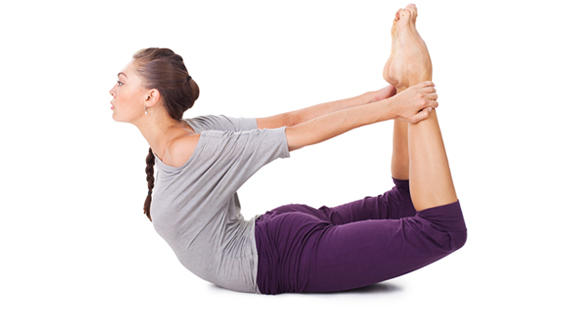 Conditions
diabetes
Diet & Weight Loss
Diet and Weight Loss
Everyday Wellness
Fitness
Health
Health Care
Healthy Eating
Conditions
diabetes
Diet & Weight Loss
Diet and Weight Loss
Everyday Wellness
Fitness
Health
Health Care
Healthy Eating
Top fat loss tips

This includes what you eat, when you go to bed, how often you go to the bathroom and how much water you drink. This will make you accountable and aware of any bad habits outside of the gym that could be hindering your results.
2. Schedule at least two recovery sessions per weekI liken your body to a bank balance. Every training session is a withdrawal; every recovery session is a deposit. If you are always training (withdrawing) and never recovering (depositing), you will eventually end up overdrawn and injured. Recovery practices include foam rolling, contrast showers, ice baths, massages and long walks.
3. Embrace hot yogaThe hot room allows for increased range of movement (which will translate into better range in your weight training), the heat enhances detoxification processes and the twisting movements improve digestion and lymphatic drainage in addition to massaging the internal organs. Yoga is also great for stress management, and when you are stressed you will hold fat.

Just because a food is ‘healthy’, doesn’t mean it’s healthy for you. If it doesn’t make you feel good, don’t eat it. Some of the most common intolerances include eggs, gluten, wheat, dairy, soy, corn and nuts. Intolerances can also be a result of eating too much of the same foods, so try and rotate your meal options regularly.
5. Support your liver and your detoxification channels using alternative body treatmentsThink acupuncture, lymphatic drainage massage, Epsom salt baths, body brushing and infra-red saunas. Drink plenty of water to flush out toxins and try starting the day with a glass of warm water with fresh lemon juice.
How to Lose Weight: 40 Fast, Easy Tips
9 Tricks to Jump-Start Weight Loss
Before you start overhauling your eating habits, record everything you drink and eat. Many apps and websites can help or you can use tried-and-true pen and paper. Note trouble spots that you’ll need to address, like that mid-afternoon snack. This whole process will jump-start weight loss by making you feel more accountable for what you eat every day. “This is the single most important thing you can do when you’re watching your calories,” says Paige Waehner, a certified personal trainer, author of The About.com Guide to Getting in Shape, and the Exercise Expert at About.com. “I have so many clients who think they're eating healthy, but having to write down every bite makes you aware of those extra calories we eat without even realizing it. Just an extra handful of nuts could cost you more than 100 calories.”
2 Blab to the world
Don’t keep your weight-loss goals a secret. Better your chances of quick weight loss (and long-term diet success) by spreading the word to friends and family about your new diet. It will help motivate you and increase your accountability. “Almost no one succeeds without support from the people around them,” says Malia Frey, MA, CPT, CHC, the Weight Loss Expert at About.com. “Asking for help is the most important part of your weight-loss program.” Just be sure to tell the right people. “Share with people who are going to encourage you, not hold you back,” says Jay Cardiello, health strategist and star of ABC’s My Diet Is Better Than Yours. You may also want to find a buddy with a similar goal. You can encourage one another when times get tough, work out together, share your progress, and swap advice. Don’t be counter-productive by comparing your weight loss with that of your friend, such as questioning why she’s losing weight faster than you.
3.Purge your kitchen

